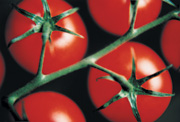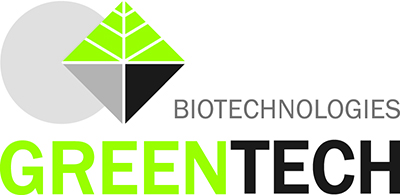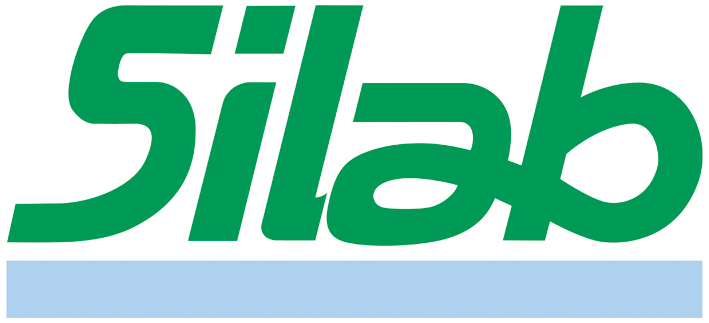John Woodruff examines ways of dealing with cellular damage cause by UV radiation and the formation of free radicals
The April edition of SPC magazine discussed formulation of sun protection products with an emphasis on how the requirement to provide higher levels of UVA protection is driving new product development. Under the title Taking the strain both organic and inorganic UV absorbers and ways of providing photo-stable, water-resistant products were described, with the necessity of meeting EU recommendations at the forefront. However, reducing the amount of UV radiation that reaches the skin is not the entire story; any radiation that penetrates the stratum corneum is going to damage skin cells, particularly through the formation of free radicals.
Cellular damage is primarily caused by the generation of free radicals which are formed by a number of different pathways, one of which is via UV radiation. Oxygen molecules, when in their ground state, are relatively harmless. However, when oxygen molecules are irradiated by UV light and thus reduced by one, two or three electrons, they become highly reactive and extremely destructive, causing mutagenesis, protein denaturisation and lipid peroxidation. When cellular membranes are damaged or proteins are denatured, ageing is accelerated.
The epidermis and dermis have their own protective capability against damage by free radicals but there is a loss of efficacy with age so many ingredient suppliers now produce materials that mitigate such damage. The most common approach to combating the degenerative effect of free radical damage is by using an antioxidant, either as part of a sunscreen product, as a vital ingredient to an all-day moisturiser or for addition to an aftersun lotion.

Antioxidant activity
A typical claim for such ingredients is that made by Silab in describing its material Helioxine [INCI: Helianthus annuus (sunflower) seed extract]. Based on polyphenols and photoreceptors extracted and purified from the sunflower plant, Helioxine acts as a natural photo-protector by quenching photo-induced free radicals and reinforces the cell protective mechanisms of skin. Also from Silab, Helisun [INCI: Jasminum officinale (jasmine) flower extract] is described as an active ingredient that is rich in jasmine flavonoids which reinforce the cell mechanisms for fighting against oxidation. It protects proteins and DNA and reduces inflammatory phenomena by protecting the activity of catalase, a key enzyme in the anti-free radical cascade, and by helping the recovery of intercellular glutathione levels.
OTZ-10 from Exsymol is an aqueous-glycolic solution of 2-oxo-1,3-thiazolidine [INCI: Oxothiazolidine], specifically designed to reduce damage caused by UVA. It is not a UVA filter but penetrates the skin as deeply as UVA wavelengths to correct the damage caused by solar radiation. Part of the skin’s defence mechanism against UVA damage is the release of taurine but this is inhibited by UVB radiation. Oxothiazolidine is broken down by free radical activity within skin cells to release taurine, thus supporting the natural process.
Eurol BT from B&T is a water-soluble extract of olive leaves, rich in bioflavonoids, especially oleoeuropein. It exhibits strong radical scavenging properties and has been tested in vivo and in vitro to show that it provides photo-protection to help prevent photo-ageing, has anti-tyrosinase activity, anti-pollution activity and antimicrobial activity. Claritea from Solabia is Camellia sinensis leaf extract from white tea, which reduces redness and tingling sensations. It also improves cutaneous microcirculation and has a significant vasoconstrictor activity which minimises dilated blood vessels on the cheeks and around the nose. Claritea also inhibits melanin synthesis due to an anti-tyrosinase activity, making it ideal for strained, tired skins and to help restore radiance and clarity.

Lycopene extracted from tomatoes is effective in fighting pollutants like nitrogen dioxide and features in several new ingredients
Carrubba supplies a standardised extract of green tea, rich in polyphenols, and Overseal Foods provides Cocoanox, a cocoa derived antioxidant also with high polyphenols content. Aromtech offers a range of arctic berry seed oils extracted using supercritical CO2 with each having an exceptionally high level of tocotrienols and tocopherols. Among them are Red Tocol [INCI: Oxycoccus palustris (cranberry) seed oil], Red Alfa [INCI: Vaccinium vitis-idaea (lingonberry) seed oil], Sun Essence [INCI: Rubus chamaemorus (cloudberry) seed oil] and Summer Vita [INCI: Fragaria ananassa (strawberry) seed oil].
Added vitamins
Alpha-tocopherol or vitamin E is one of the best known and most widely available antioxidant materials. Tocopherol is used as an antioxidant in concentrations of 0.05% to 0.2% but the more stable form of vitamin E is a-tocopheryl acetate, which is easily incorporated into cosmetics and has a good stability. a-tocopherol is then slowly released in the skin by enzyme hydrolysis and extensive studies published by DSM show it to be an effective antioxidant and free radical scavenger. It boosts SPF activity of sunscreens, reduces erythema and has remarkable anti-ageing properties. The combination of a-tocopherol with ascorbyl palmitate exerts a synergistic effect and is a potent mix in combating the deleterious effects of solar radiation.
Vitamin C, or ascorbic acid is often referred to as the bench mark for anti-oxidant activity but it is notoriously difficult to stabilise in cosmetic formulations. An interesting version is supplied by Gransil as Gransil PS-5 AA20, which is vitamin C in a silicone matrix that offers skin lightening as well as anti-ageing properties. Other stabilised variants are Vitasphere C&E from Soliance and Salvona’s Multisal Vitamin C&E, which is protected by an innovative mechanism that releases slowly over time. AA2G is ascorbic acid 2-glucoside from Hayashibara and is described as a stabilised form of vitamin C. AA2G is a multifunctional active ingredient that reduces melanin synthesis, therefore promoting a luminous and more even skin tone. It has free radical scavenger activity and promotes synthesis of collagen to reduce fine lines and wrinkles.
Claimed to have comparable activity to vitamin C but without any stability issues Dermotec UV from Biotech GmbH is ethyl ferulate, an ester of ferulic acid with radical scavenging and UV absorption properties. It can be incorporated into various cosmetic formulations including sun creams and moisturisers. Ethyl ferulate is also a constituent of Celligent from Rahn. According to the literature provided by Rahn ethyl ferulate is a natural antioxidant with UV absorbing properties. It neutralises oxygen radicals that have arisen as a result of UV radiation and thus protects cells against oxidative stress.
Ethyl ferulate is structurally related to cinnamic acid esters and possesses an extended pi-electron system with high powers of absorption in the UV range and thus reduces the penetration of UV radiation into the skin. Celligent also contains a rosemary extract rich in the powerful antioxidant carnosolic acid. When applied topically this supports the skin’s defence against free radicals. The third component of Celligent is uridine monophosphate or UMP. It exists naturally in skin cells as a precursor to the formation of the pyrimidine nucleotides, thymine and cytosine, which are particularly susceptible to damage by UV radiation. UMP hastens the regeneration of these nucleotides and thus supports the repair of the DNA.
As with all materials mentioned in this feature the claims made are supported by company literature; that provided by Rahn is particularly detailed and it also includes a simple guide to how DNA is damaged by solar radiation. The same attention to detail may also be claimed for the Rahn literature describing its free radical scavenger trade-named Radicare. Its principal constituents are Melissa officinalis extract, disodium rutinyl disulphate and Hordeum distichon extract and these are claimed to act in synergy to provide an efficient free radical additive for topical applications.
Gattefossé provides a number of suitable materials. Gatuline Age Defense contains Juglans regia (walnut) seed oil and is said to protect the cell’s antioxidant molecular pool while offering biostimulating properties. Rosemary Oily Extract is a protective agent used to fight oxidation, free radical production and bacterial development. Studies have shown that lycopenes are twice as effective as beta-carotene in fighting pollution damage, in particular nitrogen dioxide, one of the principal polluting gases. Lyco Sol contains lycopenes extracted from tomatoes and its chemical nature makes it an excellent neutraliser of free radicals created as a result of sun and UV exposure.
The seeds of fennel (Foeniculum vulgare) contain significant quantities of oxido-reductase enzymes. Enzymes such as superoxide dismutase, catalase or peroxidase scavenge radicals in the aqueous portion of the cell as well as water soluble organic peroxides released from damaged cell membranes. Arch Personal Care Products has extracted similar enzymes from fennel and markets it as NAB Fennel Seed Extract, claiming that it provides a layer of enzymatic protection when applied in cosmetic formulations resulting in neutralisation of destructive peroxides. It also reduces redness caused by UV induced erythema.
ISP-Vincience suggests D’Orientine S, an extract from dates (Phoenix dactylyfera) for its antioxidant, anti-wrinkle and anti-ageing properties. It has catalase activity, its content of phytosterols provides a barrier function, phytosteroids have hormone-like activity, isoflavones are said to be anti-ageing, ursolic acid is regenerating, policosanols support the neuro-immune system, and tocotrienols and vitamin A are antioxidants.
There are numerous other natural extracts with antioxidant claims. Active Concepts supplies extracts of the so-called superfruits goji berry and pomegranate and mulberry extract and bearberry powder have both skin lightening and antioxidant properties. Green tea extract from Active Concepts and other suppliers is known for its antioxidant activity, as are extracts from the South African Roobios plant. ACB Acerola Bioferment is a rich source of vitamin C and ACB Purslane Bioferment is a natural source of glutathione, which is essential for the turnover and maintenance of ascorbic acid as well as for metabolism generally.
In a private communication Barbara Brockway of IMCD explained that all plants have high levels of antioxidant material in their composition because their leaves have a large surface to volume ratio, which they move to follow the sun in order to perform photosynthesis. All plants are therefore subject to huge amounts of UV light and need to protect themselves.
Marine & mineral options
Another rich source of antioxidants are marine plants. Biotech Marine supplies Pyrenoine as an example of brown algae with antioxidative properties suitable for anti-ageing and skin protection products. The algae is Fucus spiralis and it is regularly exposed to inter-tidal sun and has developed a high concentration of phloroglucinol derivatives to protect itself.
The marine plankton Artemia salina is the source of GP4G IS from ISP-Vincience. GP4G IS increases cellular defences against UV stress and shows multiple protective effects. It increases cellular protection against UV aggressions and DNA damage, stimulates HSP70 proteins implicated in the fight against cellular stress and offers an anti-inflammatory action by decreasing the level of inflammatory cytokines such as IL-1a, IL-8 and TNFa.
A different approach to using botanical extracts is proposed by Gattefossé, which supplies a number of mineral-based materials with skin protection claims. Zin’Cîte is an extract of smithsonite, which is rich in zinc, a key oligo-element for the skin. Zin’Cîte claims a genoprotective effect by inducing metallothionein synthesis.

Gattefossé has launched a series of mineral-based materials with skin protection claims, including the copper-rich MalaKîte from malachite
It improves cellular protection against the harmful effects of UVB and helps in sequestering heavy metals found in pollution. Rhodo’Lîte is an extract of rhodochrosite, a manganese carbonate mineral. Manganese protects fibroblasts against UVA induced oxidising stress through the preventative stimulation of the cell’s natural defence mechanism. It is suggested for anti-ageing products, inducing a deep skin protection by preserving cells that release collagen and elastin. It also claims to be an anti-stress stone and to stabilise our emotions.Finally Mala’Kîte is an extract using malachite as the source material. Rich in copper, it claims a strong protective action due to its radical scavenging activity against superoxide anions and a detoxifying action through its ability to stimulate glutathione reductase production in the cell. Non photo-toxic, Mala’Kîte is recommended for protective skin products to combat daily stresses as well as for aftersun products.
Resveratrol is of great interest because of its activity on the SIR-2 gene. Recent research has shown the SIR-2 gene to be responsible for preserving longevity and it can provide up to 50% increase in life-span. There are 15 free radical species that are relevant to skin damage, some from external damage and some from within. All antioxidants are effective against these, but some antioxidants are better for certain reactive oxygen species than others. ACB Sirtuin Complex from IMCD is an extract of Podophyllum peltatum (mayapple) which is shown to be effective with the SIR-2 gene and is also an excellent antioxidant.
Inflammatory response
With age, the immune system becomes less effective and its capacity to manage the inflammatory response is reduced and inflammatory activity increases. From the magnolia tree comes MAXnolia by Mibelle Biochemistry. It is a water-dispersible active powder based on magnolia bark extract and it contains two anti-inflammatory substances – magnolol and honokiol – which synergistically inhibit the activation of NF-KB, a key mediator in both inflammatory and ageing processes. Tests show that it reduces facial skin redness and improves the hydration and viscoelastic properties of skin, notably on the crow’s feet area. Its principal constituents are Magnolia officinalis bark extract, Vitis vinifera (grape) seed extract and tocopherol and its recommended use level is 0.1-0.5%.

Other materials that reduce the inflammatory response include Isocell Care from Lucas Meyer, which is sodium styrene/acrylates copolymer in a liposome delivery system. It is described as a soothing agent that reduces irritation caused by external stress such as UV rays. A special phospholipids fraction restores the skin barrier and moisturises by reducing transepidermal water loss (TEWL). Protectol from Greentech is a mixture of glycolic extracts of Betula alba bark and Scrophularia nodosa, which reduces the erythema and irritation caused by sun damage by inhibiting the production of inflammatory enzymes, inflammation mediators and the pro-inflammatory cytokine, Interleukine-1a.
Unipex Innovations supplies a number of different materials with antioxidant, free radical scavenging or anti-irritant properties. Canadian Willowherb is an extract of Epilobium angustifolium with strong non-steroidal anti-irritant properties. Lanatellis from Unipex is a synergistic combination of Asian green tea and African Chrysanthellum indicum with potent natural antioxidant properties for topical application and Homeoxy is a combination of algae polysaccharides from Entermorpha compressa and Palmaria palmate with free radical scavenging activity.
Quintescine from ISP-Vincience is described as an antioxidant peptide that protects against glycation damage, protects skin from environmental stresses and prevents loss of skin resiliency. It is a synthetic dimer-peptide mimetic to glutathione, a natural tripeptide and an essential component of the skin’s natural defence mechanism. From the same company the properties of Phytoquintescine are similarly described but it is an extract of Triticum monococcum, extracted by a specific extraction process, selective hydrolysis and purification which results in a concentrated isolate of a dimer peptide with antioxidant properties.
Not only does oxidation cause cellular damage within human skin cells, oxidation also harms many cosmetic ingredients, particularly unsaturated oils with a high content of essential fatty acids. Antioxidants can play a key role in protecting these materials and in addition to the well known synthetic antioxidants like butylated hydroxy toluene (BHT), butylated hydroxy anisole (BHA) and propyl gallate there are suitable antioxidants of natural origin.
Probably the best known natural antioxidants are the tocopherols, which exist in nature as four different homologues of which gamma and delta are the most effective. Cognis supplies a number of variants targeted towards natural oil protection (the Covi-ox series), formulation protection (the Controx series) and for topical application for cell protection (the Copherols). Tocomix from Jan Dekker is based on an optimised selection of natural tocopherols. Other materials from this supplier are the oil-soluble Phytox Rosemary L3 with a high content of carnosic acid and Phytox LTR containing ascorbyl palmitate.
Rosemary extracts are popular as natural antioxidants. That provided by ICSC is trade-named Danox and it is used in edible as well as cosmetic oils and butters and is available in oil and water soluble forms. Natpure Rox is a rosemary extract from Sensient Laboratories primarily aimed at products for topical application.
Following the acquisiton of Ciba, BASF provides a number of antioxidants under the Tinogard trade name. Tinogards TS and TT are hydroxyhydrocinnamate esters and Tinogard NOA is tetrabutyl ethylidine-bisphenol. Each is recommended for specific purposes and all are claimed to be non-yellowing. Other Tinogard materials are suitable for topical application to protect the activity of essential fatty acids and to protect UV-A filters from degradation by UV light.
Author
John Woodruff
www.creative-developments.co.uk











